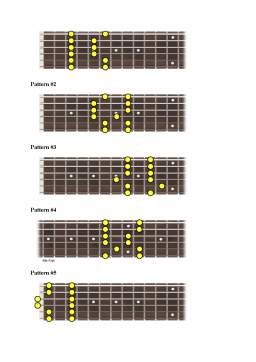Extras din curs
All other instrumentalists learn early on to play with 100% control does not come naturally. For one reason or another alot of guitar players don’t develop great technique. Many hours of study and practice are necessary, and you can practice to your heart’s content but if your posture and hand positions are awkward it’s going to work against you, and take longer.
Like my favorite uncle used to say “Practice doesn’t make perfect, perfect practice makes perfect”. It is important to be comfortable when you are playing. And learning how to sit, how to finger a chord or note properly, how to pick accurately can go a long way in developing some skill.
Some guitarists are natural and develop their own technique; however this doesn’t work for everyone. Here are some loose guidelines that will help get you on the right track.
Your Strap
Don’t be holding the guitar up, that is the strap’s job. If you are sitting then it is the job of your knee. You want your hands to be free to fret and strum. Try and have your strap adjusted to the same height. Learning to play guitar in a consistent position will help alot.
Alot of guitar teachers will tell you the guitar has to be in an exact certain position, I don’t completely agree with this maxim as everyone is different. Bodies come in different shapes and sizes and so do guitars. So experiment, and observe your body and position when you are playing. Pay attention to your arms and hands especially, but keep in mind your whole body plays a role.
Your Posture
- Your body works alot better when your spine is straight so sit upright and slightly forward
- Try to sit in the same chair every time you practice (or if you prefer to stand with a guitar strap, stand in the same position)
- Focus on what you are doing, and check your posture and body position, try not to develop any awkward habits
- Try not to slouch
- Don’t lay the guitar flat on your lap
- Don’t rest your left forearm on your left knee
- Don’t push the neck way out in front of you
- Be careful of having too much tension, and try to relax when you play; alot of people play with alot of tension you should be pretty loose and relaxed when you play, it shouldn’t be all pain
The Invisible Thumb
In most situations your thumb should be invisible to anyone standing in from of you. Check in a mirror if you are unsure if this is the case. Yes, some of the best guitar players in the world (Hendrix is one example) have used their thumbs to great success, but you should probably leave advanced techniques like these until later in your development.
Generally keep your thumb in hitchhiking position, pointed away from you with the ball of the thumb in the center of the neck. Your thumb will more than likely move around when you play, especially if you are fretting awkwardly shaped guitar chords. But for the most part try to keep it in this center position.
The C Chord
You are now ready to learn your first chord. A chord is a combination of 2 or more notes that sound good together, in other words, they harmonize. The following few lessons will quickly get you on the road to chord formation, and you don’t even need to know anything about musical theory to begin practicing.
Dozens of notable musicians have made their way to rock stardom with little or no musical theory. For now just concentrate on getting your fingers in the correct positions, the rest will come with practice and time.
The chord we’ve selected to start you on is the chord of C Major, or popularly known as C. This chord is used widely and will relate to many others that you will learn later on. The black dots in the diagram indicate the position for each finger. Take your finger and place it just behind the fret indicated. If necessary use your right hand to help put your fingers in place.
The C Chord is formed like this:
- Index finger just behind the first fret on the second string (B).
- Middle finger, just behind the 2nd fret on the forth string (D).
- Ring finger behind the third fret on the 5th string (A).
- The first and third string are played open, whereas the 6th string is not played at all.
Strumming
Now that you know how to finger the C Chord, let’s strum it. To start out use all downstrokes. And when you are strumming make sure hit only 5 of the 6 strings. If you look at the diagram to the right you will see that you shouldn’t play the low e string (or the thickest string on the guitar). Make sure when you strum that you count it evenly in sets of 4. In the below diagram the D stands for downstrum and the count underneath should be followed evenly. This is common notation for demonstrating strumming patterns.
If you are just starting out, or if you struggle you may want to count the strumming pattern out loud. A good sense of timing takes a long time to develop but is very important later on when you get into more advanced strumming patterns.
Preview document
Conținut arhivă zip
- Lectii de Chitara.docx










































































